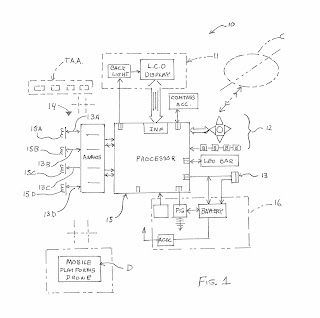Recently, as I was running an errand before work, I happened to notice an establishment called the 007 Barbershop.
Now, aside from thinking about some of the silliness that is related to giving men's salons names that evoke a certain kind of "manliness", I started to think about... the IP. Yes, it is everywhere, did you not see that blog post/dare? The barbershop in question was using a logo that was purposefully similar to the James Bond 007 logo. While slight alterations were made--scissors instead of a gun, etc.--it was still clearly styled after another highly recognizable IP.
This got me thinking. Would it be possible to register this logo or business name as a trademark at any level? How similar are they? Would the contexts be dissimilar enough to successfully claim distinctiveness and avoid likelihood of confusion?
It's hard to say; let's investigate some IP and see what we might determine. I happen to already know a fair bit about James Bone-franchise related IP (what did I say about the occupational hazard?), but here's a brief review of certain properties and ownership for those who may not have that familiarity.
First of all, most of the James Bond (regarding the British spy originally conceived of and written by Ian Fleming) now belongs to Danjaq S.A., a Swiss corporation (it has holdings in the US as Danjaq LLC). [I am uncertain how the rights have migrated from probably copyrights for novels belonging to Fleming and (likely) his publishers to a Swiss corporation, but it happened, and that's not our focus today.]
Many of the trademark registrations that are related to the James Bond franchise are therefore international extensions from original Swiss filings. And, apparently, the Swiss are much happier to let corporations clump together many different classes of goods and services under one registration.
 |
One of the registered marks for a James Bond concept
|
Among the most recognizable properties is the 007 logo, with and without words, each separately registered. Both have a slew of associated goods AND services (really! they're technically both a service mark and trademark at once), including not only the obvious movie entertainment. The logo without words,
registration no. 1739332, includes classes 003, 009, 014, 016, 018, 025, 028, 041. The same eight classes are included for the logo including words (James Bond),
registration no. 1737876.  |
Logo with words, in case you forgot who 007 is
|
Of course, this is just one set of manifestations of the 007 logo. Several more are registered with a similar number of goods and classes. Familiar with the gun barrel sequence? If you've been exposed to any James Bond, you likely are. While I didn't find any motion picture marks, as in registrations for the exact sequence that precedes all Bond movies, I did find a couple registrations for the image of the gun barrel sans blood and Bond. Among them are registration nos. 4671991 and 4190845, which both claim motion picture/DVD/movie recordings as either entertainment or product, and one claims a couple other properties like shirts and fragrances. Again, there are more registrations for that same symbol.  |
Yep, this is trademarked
|
Quite a few registrations are listed for titles of Bond films. "But Hannah," I know you're saying, "aren't these movies productions from United Artists? Wouldn't they own the rights?" And you are partially correct--UA is the production company behind the James Bond movies. You may also know that I frequently say IP is very complex and one property may seem to be more than one type. This is especially true when it comes to mega-billion, long-running franchises like James Bond. UA's properties mostly reside in the realm of copyright. Without getting too far into that--really, this is about evaluating the ability to register the name of a salon I saw, not just nerding out over James Bond IP!--suffice it to say that a basic search revealed both Danjaq and UA on a LOT of Bond copyrights.  |
| A movie title mark, registration no. 3686854 |
The movie title trademarks are for goods and services that are marketed under those names, not for the movies themselves. So quite a few toys, items of apparel, etc. are all marketed using the titles as a mark, not the creative work.
A lot of familiar phrases and concepts are registered, too. For example, "shaken, not stirred" appears a few times.  |
This one is dead, though
|
I also was pleased to find the James Bond theme music registered, no. 4065012. I do so enjoy sensory marks! Visit the link, and the click on the Documents tag, and select any item that is an MP4 to view a movie clip, theatrical trailer, or DVD intro scene, all complete with the theme music. I've watched a few today.
Given what I reviewed, I would be reluctant to register the barbershop's name and logo. While I certainly would not confuse it as being one of Danjaq's holdings, that's in no small part because I have so much familiarity with the relevant IP. Might someone else mistake it? Or would Danjaq just take them to court? It's hard to say, but with some of the Danjaq registrations including beauty/styling products, there just too much similarity for it to easily pass.
BONUS! For everyone who follows the Instagram Library Cat, here's a
fact that isn't shared in those posts: her name is Jimmi Bond, because
she wears a tuxedo just like the British secret agent. And I was also
originally informed she was a male cat, and called her James Bond for a
few minutes before deciding that such a pathetic little scrap of kitten
was more of a Jimmy Bond... and then changed the spelling when I got
close enough to see she was female.  |
| The famous Library Cat, Jimmi Bond |










